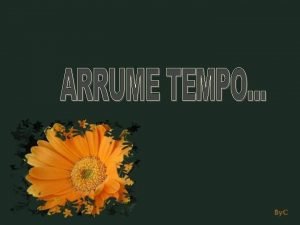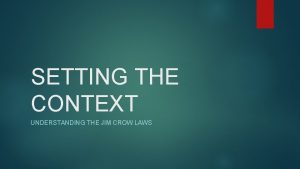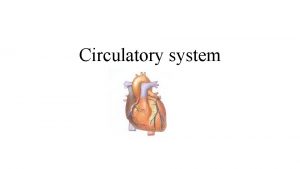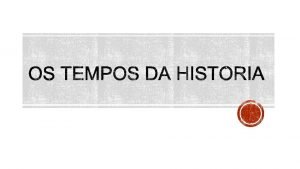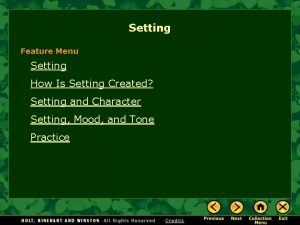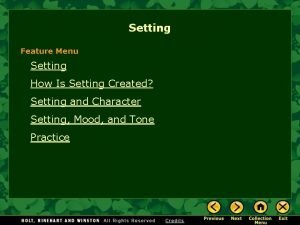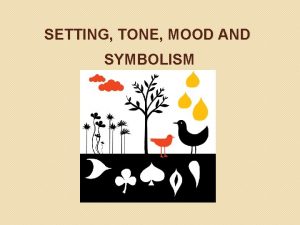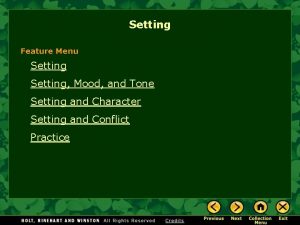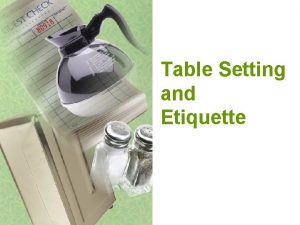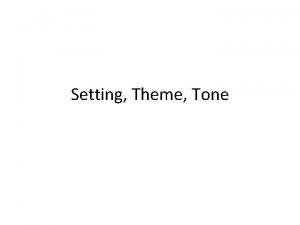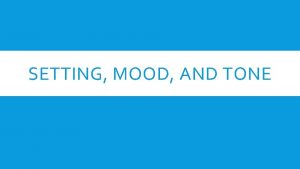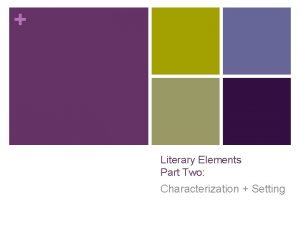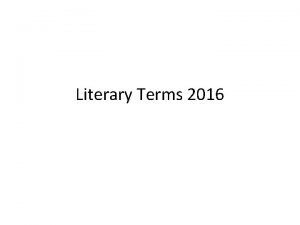Setting the Hearts Tempo Setting the Hearts Tempo





















- Slides: 21

Setting the Hearts Tempo Setting the Heart’s Tempo

Cardiac Muscle The heart is Made up of A type of cardiac muscle known as myogenic muscle: Cardiac Muscle: Striated muscle that is branched. Myogenic muscle: Muscle that is able to contract without external nerve stimulation

Proof of Myogenic Muscle • A heart will continue to beat after it is removed (usually only a few beats) • A frog’s heart chopped in small pieces and sprinkled with salt = each piece beats

How does the heart keep its rythum Sinoatrial (SA node): - A bundle of specialized nerve and muscle cells located in the right atrium below the superior vena cava

How does the heart keep its rythm Sinoatrial (SA node): - A bundle of specialized nerve and muscle cells located in the right atrium below the superior vena cava - Acts as a pace maker - From this group nerve impulses are transported to other muscle cells by modified muscle tissue

How does the heart keep its rythm Atrioventricular (AV node): - Acts as a conductor - Sends the impulse along a special nerve track down the septum between the two ventricles

How does the heart keep its rythm Atrioventricular (AV node): - Acts as a conductor - Sends the impulse along a special nerve track down the septum between the two ventricles - This special tract is called the Purkinje fiber and it continues up to the atrium

jk k

Result of nerve impulses Nerve impulse moving down Purkinje fibre: Contracts the heart muscles starting with the atria then the ventricles.

Monitoring the heart Electrocardiograph: Measures the electrical impulses traveling through the heart. This provides information about

Monitoring the heart Electrocardiograph: Measures the electrical impulses traveling through the heart. This provides information about - rate and regularity of heartbeats, - size and position of chambers,

Monitoring the heart Electrocardiograph: Measures the electrical impulses traveling through the heart. This provides information about - rate and regularity of heartbeats, - size and position of chambers, - presence of any damage (dead tissue does not contract = abnormal wave)

Monitoring the heart Electrocardiograph: Measures the electrical impulses traveling through the heart. This provides information about - rate and regularity of heartbeats, - size and position of chambers, - presence of any damage (dead tissue does not contract = abnormal wave) - effects of drugs or devices used to regulate the heart (pacemaker) and stress tests

j k

j k

Heart rate • Increased need for oxygen during exercise = heart rate increases to get oxygenated blood to cells Tachycardia: Bradycardia:

Heart rate • Increased need for oxygen during exercise = heart rate increases to get oxygenated blood to cells Tachycardia: Heart rate over 100 beats per minute Bradycardia: Heart rate under 60 beats per minute with other symptoms such as fainting

Heart Sounds “Lubb-dubb” : They typical heart sound created by the closing of the heart valves Lubb = av valves close Dubb = closing of the semilunar valve Diastole: Systole:

Heart Sounds “Lubb-dubb” : They typical heart sound created by the closing of the heart valves Lubb = av valves close Dubb = closing of the semilunar valve Diastole: the relaxing of the heart between contractions Systole: The contracting of the heart muscles


 A quem arrume tempo
A quem arrume tempo Perdemos tanto tempo
Perdemos tanto tempo Understanding jim crow (setting the setting)
Understanding jim crow (setting the setting) Trời xanh đây là của chúng ta thể thơ
Trời xanh đây là của chúng ta thể thơ Tư thế ngồi viết
Tư thế ngồi viết Gấu đi như thế nào
Gấu đi như thế nào Ví dụ giọng cùng tên
Ví dụ giọng cùng tên Thể thơ truyền thống
Thể thơ truyền thống Sự nuôi và dạy con của hổ
Sự nuôi và dạy con của hổ Thế nào là hệ số cao nhất
Thế nào là hệ số cao nhất Diễn thế sinh thái là
Diễn thế sinh thái là Vẽ hình chiếu vuông góc của vật thể sau
Vẽ hình chiếu vuông góc của vật thể sau 101012 bằng
101012 bằng Thế nào là mạng điện lắp đặt kiểu nổi
Thế nào là mạng điện lắp đặt kiểu nổi Lời thề hippocrates
Lời thề hippocrates Vẽ hình chiếu đứng bằng cạnh của vật thể
Vẽ hình chiếu đứng bằng cạnh của vật thể Tư thế worm breton
Tư thế worm breton đại từ thay thế
đại từ thay thế Quá trình desamine hóa có thể tạo ra
Quá trình desamine hóa có thể tạo ra Khi nào hổ mẹ dạy hổ con săn mồi
Khi nào hổ mẹ dạy hổ con săn mồi Dot
Dot
